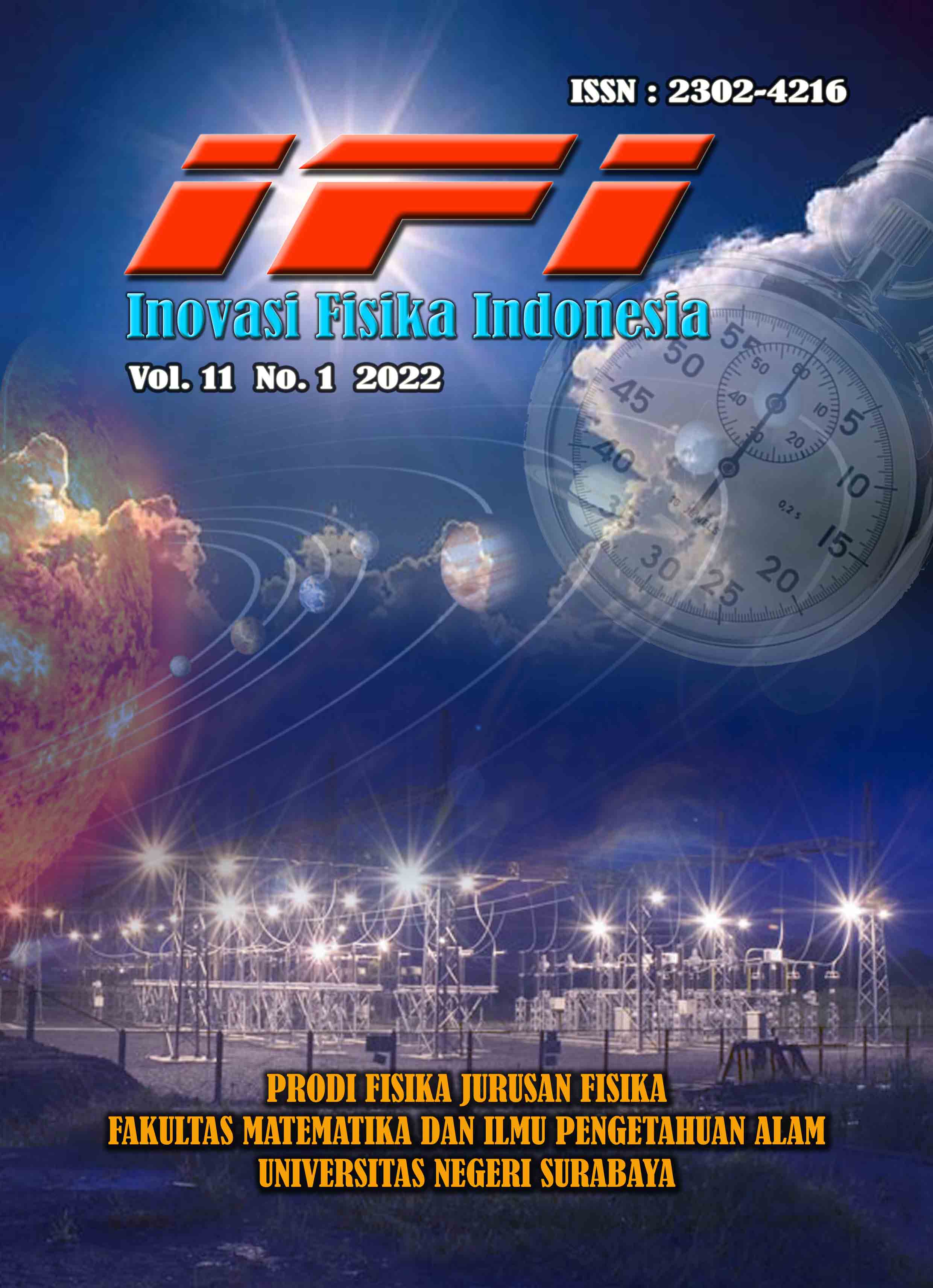PENGARUH KONSENTRASI EKSTRAK DAUN SIRIH HIJAU DAN MADU TERHADAP SIFAT ANTIBAKTERI PLESTER LUKA HIDROGEL PVA/KITOSAN
DOI:
https://doi.org/10.26740/ifi.v11n1.p48-55Downloads
Download data is not yet available.
Downloads
Published
2022-04-01
How to Cite
Chamidah, N. L. F., & Rohmawati, L. (2022). PENGARUH KONSENTRASI EKSTRAK DAUN SIRIH HIJAU DAN MADU TERHADAP SIFAT ANTIBAKTERI PLESTER LUKA HIDROGEL PVA/KITOSAN. Inovasi Fisika Indonesia, 11(1), 48–55. https://doi.org/10.26740/ifi.v11n1.p48-55
Issue
Section
Fisika Material
 Abstract views: 1829
,
Abstract views: 1829
, PDF Downloads: 3050
PDF Downloads: 3050








1.png)
